Executive Summary
This end project report evaluates the project plan created for the installation of surveillance cameras by Mekdam Corporation in Doha Clinic Hospital (DCH), Doha, Qatar. The project was implemented by a small team consisting of a project manager, a foreman, and six workers that installed all the equipment. This report includes a detailed discussion concerning work breakdown structure, scheduling, budgeting, human resources, stakeholder management, communications, risk mitigation, and quality assurance. The report signifies that the primary outcomes of the project include: (a) 26,800 QR in profits before taxes, which is 25.5% below the initial prognosis, (b) completion before the customer’s deadline but five days after the planned close date, (c) complete satisfaction of the customer, and (d) creation of long-term business relationships between Mekdam and DCH. The report is concluded with recommendations concerning the improvement of the present project.
Background
Project Overview
The present report aims to critically assess the performance of the closed-circuit television (CCTV) installation project. The project aimed to install surveillance cameras at Doha Clinic Hospital (DCH), located in Doha, Qatar. It has primarily encompassed the CCTV cameras and sound devices installed in common areas, reception waiting for bays, and hospital wards. Furthermore, special recording devices have been particularly designed to detect specific visual and sound triggers (Mileva and Burton, 2019). Therefore, when this happens, the recording device system sends an alert to the monitoring center that immediately contacts the entity in order to inform about the recent occurrence of the event. If necessary, the footage of the event can be further revised by the authorized person as far as it is safely stored (Hollis, 2019). The project was implemented by Mekdam holding, which is a Qatari-based company that specializes in technology, manufacturing and processing consultancy, trading services, construction, and real estate. Overall, the pilot project was completed successfully with no significant issues or complaints from the customer.
Organisational Strategy Alignment
Mekdam (no date) prides itself on delivering the best services to its clients. Its primary aim is to build long-term relationships with Qatari clients to ensure the safety and efficiency of the company’s operations (Mekdam, no date). The project is aligned with Mekdam’s vision, which is “to be the technology institution of preference for institutions seeking technology services in Qatar” (Mekdam, no date).
DCH is one of the most technologically advanced hospitals in Qatar (DHC, n.d.). The hospital aims at providing top-quality services using the best staff and the latest technological innovations (DHC, n.d.) Hospitals store costly equipment, drugs, and other supplies that should be stored safely from theft. CCTV surveillance aims to create protection for staff and patients from unauthorized acts. It also provides variable evidence that will be used to prevent dishonest claims and increase productivity. CCTV cameras can be installed everywhere in the hospital but as a matter of funding priorities and ethical considerations.
In summary, the project was aligned with both companies’ long-term strategies. On the one hand, Mekdam initiated long-term business relationships with the hospital, which is the central theme of the company’s strategy and vision. On the other hand, DCH improved its efficiency and security by installing surveillance cameras.
Original Project Plan
The project has been completed successfully with slight deviations from the original project plan. The planned timeline is provided in Figure 1 below. As can be seen from the timeline, the project included six stages that had to be completed in 40 days. The total estimated cost of the project was 34,000 QR, while the project’s budget was 74,000 QR. The project staff was planned to include eight employees, including a project manager, a foreman, and six workers installing the cameras. The primary stakeholders initially included in the project were the project manager, the sponsor (Mekdam), the Qatari government, the customer (DCH), the foreman, workers, suppliers and contractors. The project also assessed three risks associated with additional budgetary expenses.
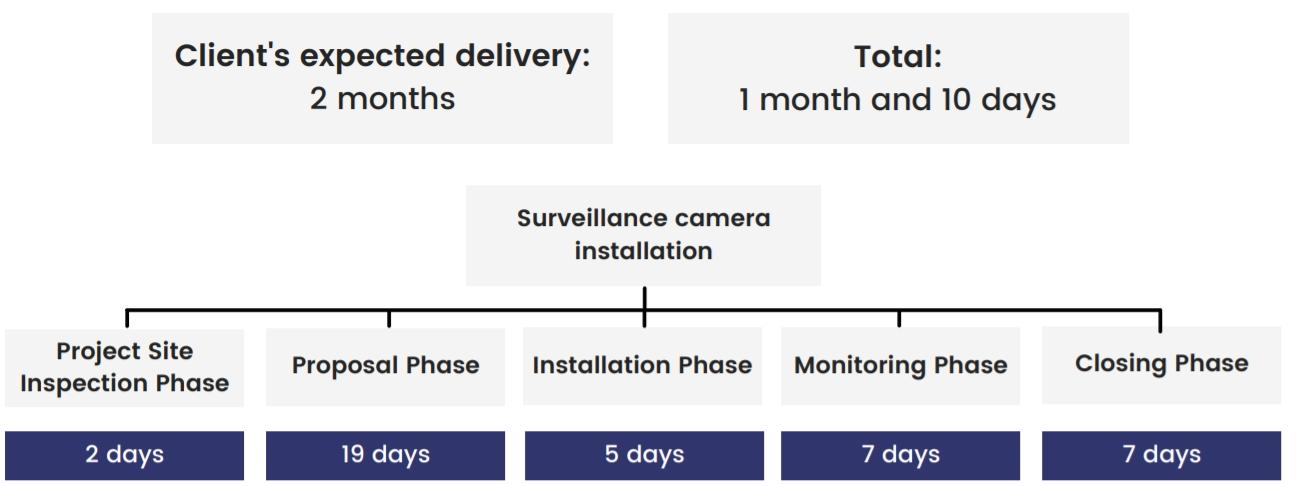
Even though DCH was satisfied with the project outcomes, there were several inconsistencies detected in the actual implementation process when compared to the initial plan. In particular, the installation phase took more time (12 days) than it was initially planned. The problem was that the hospital’s wiring system had a negative impact on the installation process, as the hospital did not have a comprehensive plan for its wiring system. At the same time, the project managed to shorten the proposal phase to 17 days, which allowed the project to last 45 days, which was within the client’s expected delivery. As a result, the cost of the project increased by 9,200 QR due to increased employee costs. Additionally, the unplanned equipment cost also added to the project’s total cost. Other problems included partially inadequate stakeholder management and incomplete risk analysis. The body of the present report discusses all these problems in detail and provides recommendations for future improvement.
Pilot Project Analysis
WBS and Gantt Chart
As mentioned in Section 1, the project schedule was only slightly altered in comparison with the initially planned schedule. The final work breakdown structure (WBS) included 12 steps in comparison with the 11 steps that were initially planned. According to Kholbaev and Alimov (2020), WBS is a crucial planning tool that helps increase project implementation’s efficiency. Additionally, WBS facilitates the work of the project manager by setting a path to success (Burghate, 2018). The actual WBS for the present project is provided below:
- Project Site Inspection Phase:
- Selection of camera location.
- Proposal Phase:
- Creating a system plan.
- Placing orders.
- Collecting orders.
- Installation Phase:
- System setup.
- Camera Installation.
- Configuration on phone and computer.
- Operation testing.
- Making necessary corrections.
- Monitoring Phase:
- Production of the system evaluation report.
- Closing Phase:
- Issuing a detailed technical paper.
- System handover.
The initial WBS was changed by adding a new task in the installation phase. The project manager was forced to include Step 3.5, called “making necessary corrections,” which was not initially in the WBS. The reason for including the step was that the operation testing found significant flaws with the camera angles, which forced the project team to make necessary modifications. Not allocating time to the possible changes that needed to be made was a design mistake, as it could have been assumed that operation testing may have revealed some problems that needed to be fixed. However, the initial plan assumed that no problems would emerge and allocated only one day to operation testing, which was not enough to make necessary changes if significant problems were detected.
As mentioned in Section 1 of the present report, some changes were also made in the project schedule, which is represented in the Gannt chart provided in Figure 2 below. According to Nurre and Weir (2017), Gannt charts are crucial for project management, as they help to visualize the project’s schedule in the most efficient way. In particular, Gannt charts represent the list of all activities, the dates of when they start and end, and what activities overlap (Nurre and Weir, 2017).
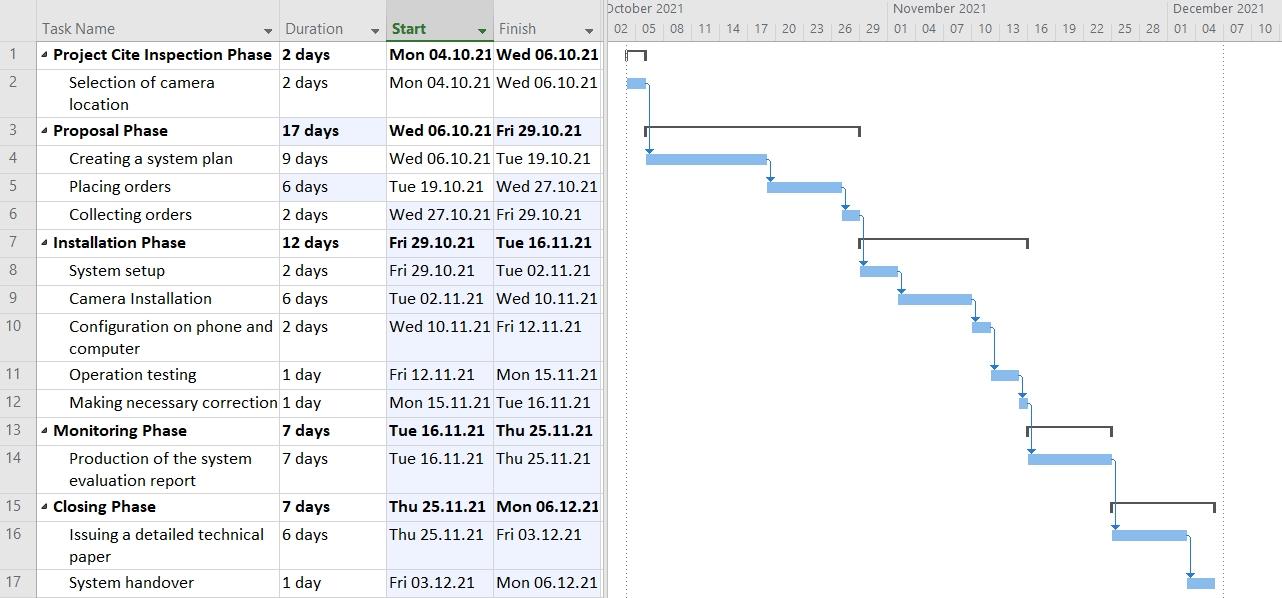
Major changes were made to the installation phase. The system setup was planned to take one day, and it took two days to accomplish. Camera installation took six days instead of the planned two days due to problems with the hospital’s wiring system. Moreover, an additional task was included in the installation phase, which increased its total duration by seven days.
The proposal phase also changed considerably. In particular, one day was added to the creating of a system plan, as the hospital did not have an adequate communication system plan. However, the placing and collecting order phases were reduced from seven to six days and from five to two days, correspondingly, which allowed completing the proposal phase faster than expected by two days. The evaluation also revealed that this phase could have been compressed even further, as suppliers fulfilled the equipment orders very quickly. However, since the project manager had enough time to spare, it was not used very efficiently. According to Sanchez and Terlizzi (2017), it is crucial for project managers to estimate the time allocated for each task adequately, as having too much time decreases the efficiency of resource use, and not having enough time may lead to frustration, stakeholder dissatisfaction, and trust issues.
As for all the other tasks, no significant delays were recorded. However, the problem was that the three deliverables were postponed due to changes in the schedule. WBS demonstrates that the project had three central deliverables, including a system plan, a system evaluation report, and a detailed technical paper. The system plan was delayed for one day due to the unavailability of the hospital’s wiring system. The system evaluation report and the detailed technical paper were delayed for five days due to problems with the installation phase. Even though the project was completed within the expected two-month timeframe, the delays negatively impacted stakeholder satisfaction and costs. The reasons for the delays, as well as detailed discussions of the effect of these delays, are provided in the following sections.
Budget Analysis
The project was a financial success even though the profitability was lower than initially expected. In particular, the budget was affected by five additional days of implementation, where all the staff was engaged and inadequate planning of the equipment required for installation. The allocated budget for the five stages is provided in Figure 3 below.
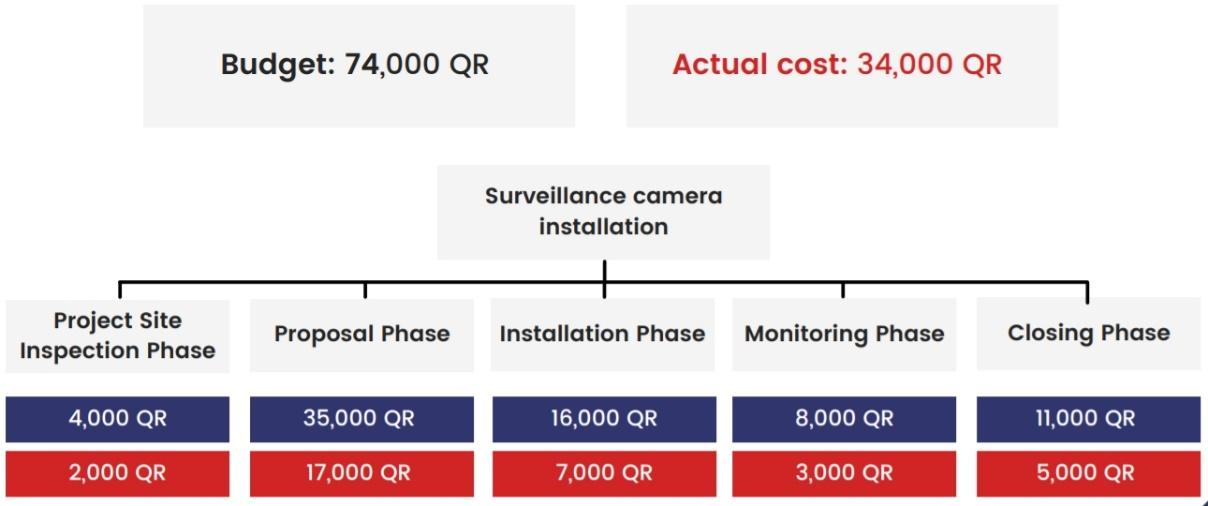
The budget for the project is provided in Table 1 below.
Table 1. Project Budget
The analysis demonstrates that the project budget was inadequate for several reasons. The central reason that could have been accounted for is the inadequately planned cost of equipment. It was initially expected to spend 7,000 QR on equipment for the hospital; however, the total amount spent on equipment was 8,500 QR. The central reason for the inadequate planning of resources was the lack of skills from the project manager. Even though the project manager had significant experience in managing projects of this kind, he was unable to identify what equipment would be needed to meet the needs of the customer. According to Matta and Ashkenas (2003), one of the most frequent reasons why good projects fail is the project manager’s inability to delegate responsibility adequately. Instead of evaluating the amount and the types of equipment needed, he may have delegated this responsibility to a consultancy group to ensure the adequacy of the forecast.
The most apparent problem that was preventable was the inadequate estimation of the time needed for installation. The project manager failed to acknowledge the risks of the lack of a hospital communication plan, which led to increased working hours that had to be paid for. The reason for such a failure was inadequate research. The project manager needed to have asked hospital communication plan before planning the schedule. Since the building of the hospital was relatively old, it could have been assumed that the communication system (wiring) would not be systematized. Thus, before creating the final budget, it would be crucial to assess all the possible risks that could lead to increased costs and duration of the project. The analysis of risk assessment and mitigation plan is provided in Section 2.6 of the present report.
In summary, even though the project’s actual costs deviated from the projected values, it was still a financial success. The customer agreed to pay 70,000 QR in two payments, with 40% upfront and 60% after the system is handed to the hospital. The initially planned costs were 32,000 QR. Thus, the initial cost-to-benefit ratio (CBR), estimated using the formula provided by Hayes (2020), was the following:

After the changes in the costs, CBR remained above 1.0, which was a sign of positive profitability (Hayes, 2020). The CBR after the changes in the budget was the following:

It should be noticed, however, that the financial success of the project was not attributed to the efficient cost management or budgeting techniques. The fact that the project remained profitable was entirely due to the high planned profit margin that allowed significant variations in costs. As a result, even though the expected profits reduced were by 9,200 QR, CBR remained above the 1.0 mark.
Human Resources and Functional Organization Structure
A total of eight staff members participated in the implementation of the project. The staff members included the project manager, a foreman, and eight employees installing the equipment. Initially, it was planned that the project manager would work on the project for 40 days, which would mean a total of 320 hours. The foreman and the workers were expected to be engaged in the project only for five days during the installation phase, which meant 40 hours total. However, due to the changes in the schedules and the prolonged installation phase, the foreman and the workers had to work for 12 days or 96 hours each. The effect it had on the profitability of the project was provided in Section 2.2 of the present report.
Determining a functional organization structure is crucial for understanding how power is distributed in a project. Functional organization structure divides the project team into several sub-teams according to their function. Such functions may include finance management, HR management, contractor management, and transportation management. An example of a strong functional organization structure is provided in Figure 4 below.
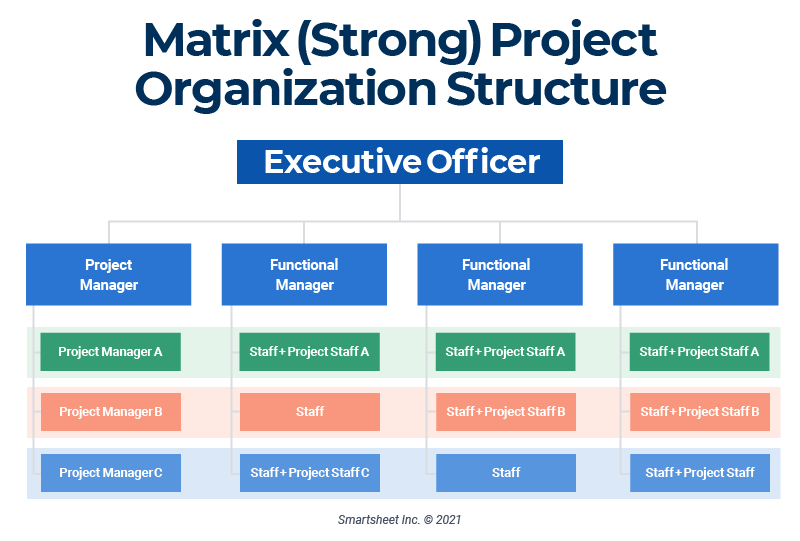
Since the present project is a small-scale project; its functional structure is simple. The project manager carries all the traditional roles, including finance, HR, quality, and stakeholder management. The only functional role taken by another employee (foreman) is operations management. The functional structure of the project is provided in Figure 5 below.

The analysis revealed that the project had an optimal number of employees and an adequate functional structure that allowed to minimise the costs. Even though the project manager had numerous functions, he had the ability to consult with contractors and managers of Mekdam for guidance. Thus, no significant flaws or deviations were found in HR management.
Stakeholder Management
The stakeholder management plan was one of the weakest points in the project; several crucial stakeholders were not acknowledged and managed even though they had a significant impact on the project’s outcome. However, since the project was a small-scale one, the effect of poor stakeholder management had a minor effect on profitability. The present section includes discussions of all the stakeholders by category.
Internal Stakeholders
The project acknowledged four internal stakeholders, including the sponsor (Mekdam), the project manager, the foreman, and six workers. The sponsor and the project manager were put in the high-power / high-interest category, and the foreman and the employees were put in the low-power / high-interest category, which was an adequate distribution. The project manager was actively engaged in the project throughout the project life cycle, while the foreman and workers were engaged only in the installation phase. While workers and the foreman were only kept informed about the progress of the project so they knew when they needed to start working, Mekdam was managed very closely. This was done in accordance with the stakeholder matrix (Nguyen, Mohamed, and Panuwatwanich, 2018). Careful management meant frequent updates about entering new phases of the project and reports about any delays. Additionally, the project manager used Medam’s consultancy services to ensure that the best suppliers, employees, and transportation services were used.
In summary, internal management was done in accordance with the original plan, and no significant changes have been made. Internal stakeholders have managed adequately, which had a positive impact on the outcomes.
External Stakeholders
The main problem emerged while managing external stakeholders. The present section provides a list of all actual external stakeholders and a discussion of how they were managed.
- Customer (DCH). The customer was put in the high power / high-interest category, which implied that it was managed very closely. The project manager was the most attentive to the customer, as it was the central stakeholder, which meant almost daily informal meetings apart from updates about any problems, delays, or progression of the project. The stakeholder was managed as planned; however, some significant problems emerged during the project. In particular, the project manager tried to keep the customer satisfied instead of trying to engage the stakeholder in the project. As a result, the project team experienced significant difficulties with getting the hospital communication (wiring) plan. Moreover, the scheduling of the installation phase was poorly synchronized with the hospital authorities, which often resulted in delays during installation, as the rooms where the cameras had to be installed were sometimes busy. This led to emergency changes in plans or increased idle time of the workers and the foreman.
- The government. The stakeholder was put in the low-interest / high-power group. The purpose of the project manager was to keep the stakeholder satisfied, which was an adequate approach, according to Guo et al. (2019). The interest of the government was that the services were provided by a licensed service provider and that no privacy laws or ethical standards were violated by the installation of surveillance cameras. Additionally, the stakeholder’s interest was that all the taxes on the income from the project are paid in due time. All the required documentation was sent to the government to ensure that the entire process was lawful. No problems emerged while managing this stakeholder.
- Contractors and suppliers. These stakeholders were put in the high-interest / low-power category, and the purpose of the project manager was to keep this group of stakeholders informed, which was an adequate approach (Nguyen, Mohamed, and Panuwatwanich, 2018). This stakeholder was managed perfectly, facilitating the shipment of all required equipment faster and making the proposal phase faster.
- Hospital employees. This group of stakeholders was not initially considered, which led to felt consequences during the installation and monitoring phases. This group of stakeholders should have been in the low-interest / low-power category, which implies that it should be monitored (Guo et al., 2019). The stakeholder was not managed, which led to dissatisfaction among employees that was revealed only during the closing phase. The problem was that the hospital employees were not explained the purpose of the installation of the cameras. Moreover, they were not informed about the fact that all privacy concerns and ethical matters were considered before the installation of cameras. The fact that the project team started installing the cameras without hospital employees being officially informed about the matter led to unfavorable outcomes. In particular, during the closing phase, several complaints from the employees were filed to the hospital administration. All the conflicts were resolved successfully due to close collaboration with the hospital management team. However, it should be acknowledged that failure to recognise hospital employees as a stakeholder could have had a considerable negative effect on the project outcome.
Communications Management
The communications management plan was implemented with minimal changes. Four types of communications were planned for the project, including meetings, email newsletters, reports, and phone calls. The initial communications plan is provided it Table 2 below. The only change that was made was that the email newsletter update was sent biweekly instead of monthly. The project manager was also forced to send an update letter when it became clear that the installation phase was being delayed for seven days. According to Hernández, Ramírez, and Laguado (2019), adequate communications management is one of the key factors that contribute to the success of a project. Effective communication with stakeholders can mitigate any problems that may arise during the implementation or planning of a project. The implementation of the communication plan was one of the key strengths of this project, as effective communication led to the satisfaction of all the stakeholders despite the increased cost and delays in the schedule.
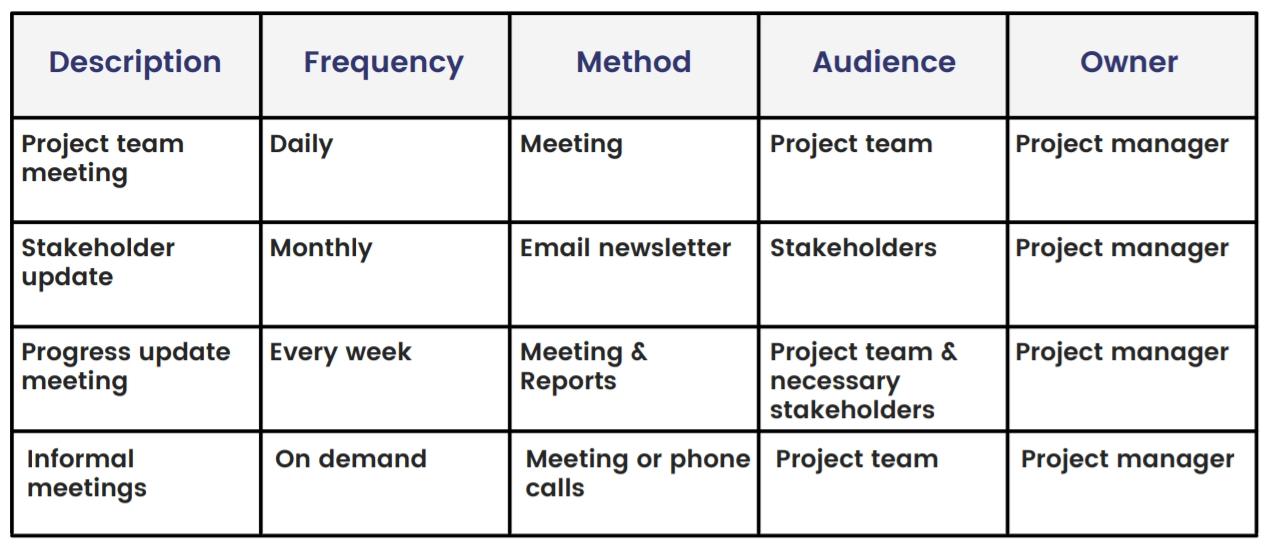
Risk Management
was implemented the way it was initially planned, which had a positive effect on the project outcomes. The acknowledged risks of the project before implementation are provided in Table 3 below. All the mitigation procedures were fully implemented, which resulted in the aversion of almost all identified risks. In particular, the increased cost of storage was averted by considering alternative storage methods. Additionally, ensuring the equipment in transit was also helpful, as it covered the expenses of replacing three (out of 50) broken cameras that were damaged by the shipping company. However, installation still had a significant impact on the budget of the project.
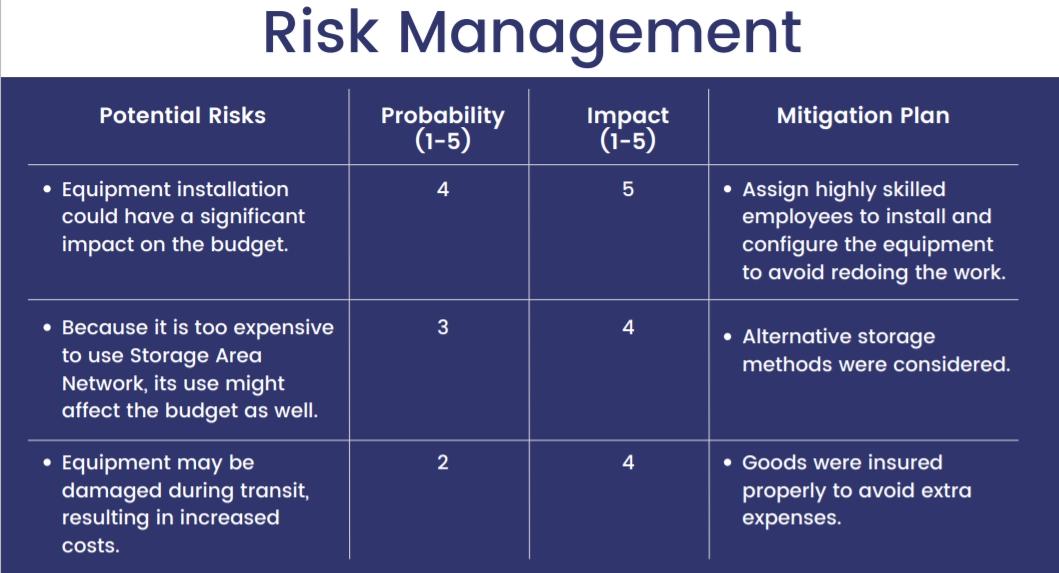
The risk management plan did not consider two matters that were already mentioned in the previous sections of the report. In particular, the risk mitigation plan did not include any procedures that to avert problems with the hospital’s wiring system. Neither did the plan include close management of the scheduling process with the hospital authorities to avoid delays and increased idle time of the project management team. Moreover, the risk management plan did not consider the fact that hospital employees can be a source of negative feedback, which would lead to damage to the reputation of DCH, Mekdam, and the project manager.
Quality Assurance
The quality management process was standard for all projects implemented by Mekdam (see Figure 6 for a detailed flowchart). The majority of the quality assurance procedures were conducted during the monitoring phase. The particular matters considered by the quality assurance procedures were the quality of the delivered cameras and other equipment, the quality of installation, and the quality of all the milestones of the project based on their comprehensiveness. No significant problems were noticed, as all the quality assurance matters were coherent with Mekdam standards of service.
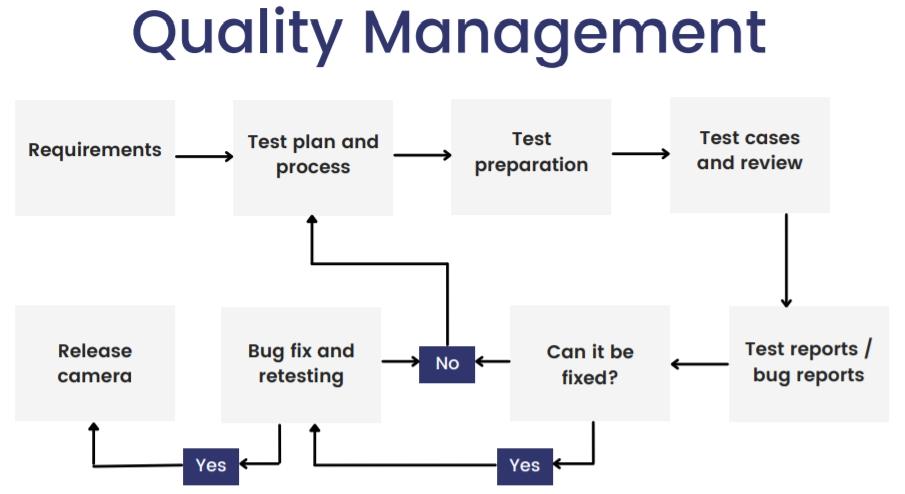
Summary and Recommendations
Summary
This section provides a list of the central findings of the present report and explains their implications for the project outcomes. The section is concluded with the acknowledgment of the primary outcomes of the project.
First, the project’s initial WBS did not have a separate step for mitigating any problems noticed during the operations testing. This signifies poor planning, as it was made under the assumption that no flaws would be found during the testing procedure. The implications of the flaw include unplanned expenses and delays in the implementation.
Second, the hospital’s wiring system was not assessed before the installation phase, which led to significant delays and additional expenses. The reasons for the problem were inadequate collaboration with the customer and poor operations planning.
Third, the analysis of stakeholder management revealed the lack of acknowledgment of hospital employees as actors with a vested interest in the project. Even though the possible problems were mitigated by close communication with the customer, this failure to acknowledges the stakeholder may have led to significant damages to the reputation of the project manager, the customer, and the sponsor.
Fourth, the analysis of the project’s functional structure and quality assurance process found no flaws in the organization of these matters. The primary reason for that is the significant experience of the project manager and the strict policies of Mekdam. Outstanding functional structure and quality assurance facilitated adequate communication, the satisfaction of all stakeholders, and the timeliness of all activities.
Fifth, the communication plan was modified to include more frequent newsletters to the stakeholders about updates on the project. Such a change positively affected the satisfaction of all stakeholders and helped to resolve and prevent possible issues.
The primary outcomes of the project include:
- The project was profitable with a profit of 26,800 QR before taxes and a CBR of 1.62. The planned profit was 36,000 QR, which implies that the deviation of the actual profit from the planned profit was -25.5%.
- The project was completed within 45 days, which is 15 days before the customer’s deadline of 60 days. However, project implementation took five additional days, which implies that the deviation from the planned length of the project was 12.5%.
- The customer was fully satisfied with the implementation of the project.
- Mekdam acquired a new strategic partner, as the companies signed a contract for maintenance of the installed surveillance system.
Recommendations
In the future, the project plan utilized for the installation of the surveillance system in the hospital can be used for the installation of similar equipment in hospitals or other organizations of a similar size. However, there are several recommendations that can be used to improve the outcomes of future projects.
- Modify WBS. As the analysis demonstrated, an additional step is needed after the operation testing. The step is needed to make the necessary changes needed after the operation testing. The suggested duration is one day.
- Allocate more time to installation. The analysis revealed that the allocation of only five days to the installation phase was inadequate due to possible complications and interruptions. The suggested minimal increase is three days.
- Revise the stakeholder management plan. The project team needs to engage the customer in the planning process and acquire all types of plans for the building before the implementation. Ensure that the interests of the employees are protected. This can be achieved by closely monitoring their satisfaction with providing needed information.
- Add mitigation procedures. The report suggests that the building’s communication systems may be one of the reasons for delays and additional costs of the installation phase. This implies that the building’s communication systems should be carefully assessed to mitigate the possible risks. Additionally, the project team needs to closely communicate with customer managers to ensure that no problems arise during the scheduling of installation.
References
Burghate, M. (2018) ‘Work breakdown structure: Simplifying project management’, International Journal of Commerce and Management, 3(2), pp. 453-461.
Doha Clinic Hospital (no date) About us.
Eby, K. (2021) Essential Guide to Project Organizational Structure.
Guo, L. et al. (2021) ‘Stakeholder Collaboration Mechanism in Elderly Community Retrofit Projects: Case Study in China’, Sustainability, 13(19), article 10759.
Hayes, A. (2020) Benefit-Cost Ratio (BCR).
Hernández, F. Y., Ramírez, R. P., and Laguado, R. I. (2019) ‘Communications management in the success of projects. Case study: Provincial university’, Journal of Physics: Conference Series, 1388(1), article 012048.
Hollis, M.E., (2019) ‘Security or surveillance? Examination of CCTV camera usage in the 21st century, Criminology and Public Policy, 18(1), pp. 131-134.
Kholbaev B. and Alimov B. (2020) ‘Importance of the planning tool in project efficiency’, International Finance and Accounting, 2020(5), pp. 24-28.
Matta, N. F. and Ashkenas, R. N. (2003) ‘Why good projects fail anyway’, Harvard Business Review, 81(9), pp. 109-116.
Mekdam (no date) About Mekdam Holding Group.
Mileva, M. and Burton, A.M. (2019) ‘Face search in CCTV surveillance’, Cognitive Research: Principles and Implications, 4(1), pp.1-21.
Nguyen, T. S., Mohamed, S., and Panuwatwanich, K. (2018) ‘Stakeholder Management in Complex Project: Review of Contemporary Literature’, Journal of Engineering, Project & Production Management, 8(2), pp. 75-89.
Nurre, S. G. and Weir, J. D. (2017) ‘Interactive Excel-based Gantt chart schedule builder’, INFORMS Transactions on Education, 17(2), pp. 49-57.
Sanchez, O. P. and Terlizzi, M. A. (2017) ‘Cost and time project management success factors for information systems development projects’, International Journal of Project Management, 35(8), pp. 1608-1626.
Ugo, P. D. (2017) ‘Project quality management performance: An insight to sustainable development initiatives in oil and gas host communities’, Journal of Management & Sustainability, 7(4), 76-84.